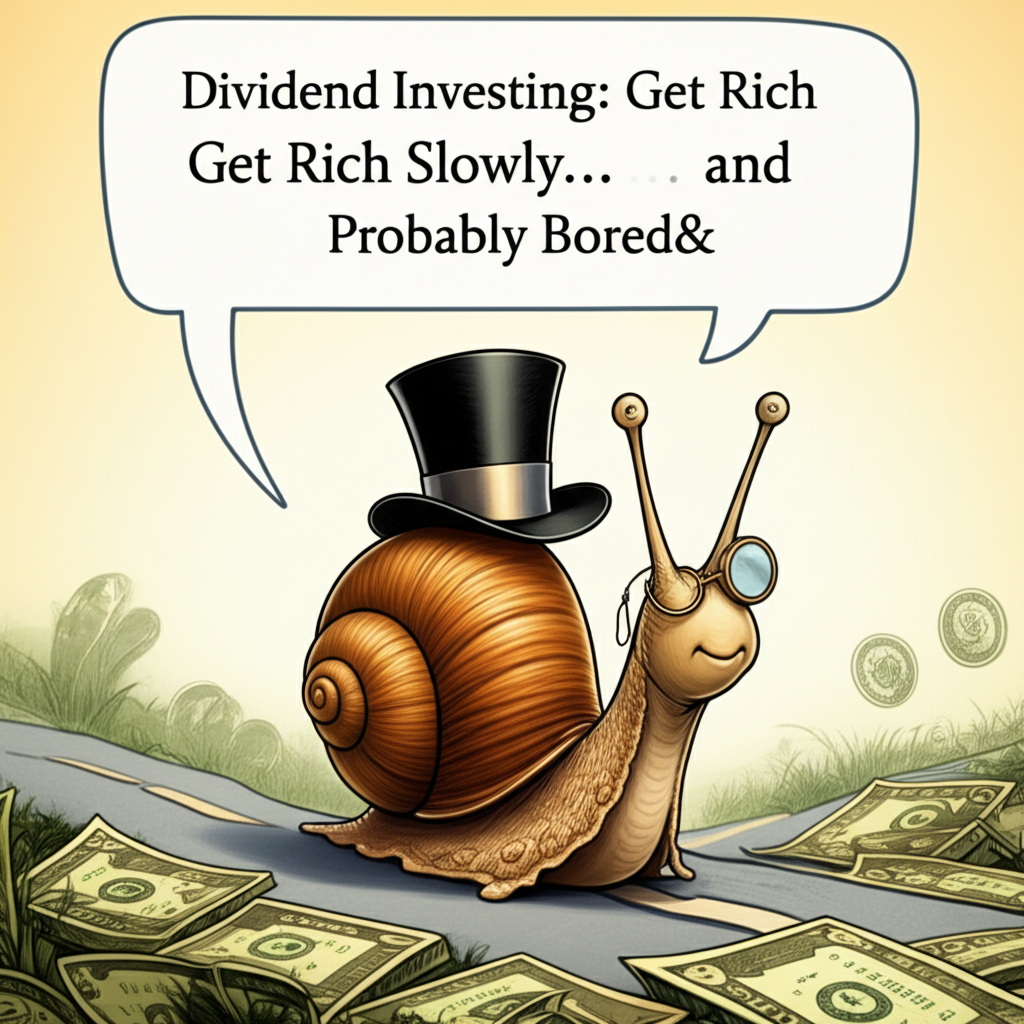
Private Equity Investing: Accessing Exclusive Deals & Unlocking High Returns (Beginner’s Guide)
In the vast landscape of investment opportunities, most individual investors are familiar with publicly traded stocks and bonds. But imagine a world of companies, from innovative startups to established businesses undergoing transformation, that you can’t buy shares of on the stock market. This is the realm of Private Equity (PE) – a powerful, often exclusive, corner of the financial world that offers the potential for significant returns by investing in private companies.
For decades, private equity was the domain of ultra-high-net-worth individuals and large institutional investors like pension funds and endowments. However, as the private markets mature and new access points emerge, more sophisticated individual investors are looking to understand and potentially access these "exclusive deals."
This comprehensive guide will demystify private equity investing, explain its allure, outline the risks, and explore the various avenues through which accredited investors can participate in this dynamic asset class.
>
What Exactly is Private Equity? The Basics Explained
At its core, Private Equity (PE) refers to capital invested in companies that are not publicly traded on a stock exchange. Unlike buying shares of Apple or Amazon, which are public companies, PE investors buy stakes in private businesses, often with the goal of improving their operations and eventually selling them for a profit.
Think of it like this:
- Public Companies: Your local grocery store where anyone can walk in and buy a pre-packaged product (shares).
- Private Companies: A bespoke tailor shop, where you commission a custom suit (an ownership stake) directly from the owner, with specific terms and a long-term relationship.
Private equity firms raise capital from various investors (called Limited Partners, or LPs) and then use this pooled capital to invest in, acquire, or buy out private companies. They often take an active role in managing and improving these companies, aiming to increase their value over several years before exiting the investment, typically through a sale to another company or by taking the company public.
Key Characteristics of Private Equity:
- Private Ownership: Investments are made in companies whose shares are not traded on public stock exchanges.
- Long-Term Horizon: PE investments typically have a long holding period, often 5-10 years or even longer.
- Active Management: PE firms usually take an active role in their portfolio companies, providing strategic guidance, operational improvements, and financial expertise.
- Illiquidity: Unlike public stocks, PE investments cannot be easily bought or sold on a daily basis.
Different Flavors of Private Equity: Understanding the Strategies
Private equity isn’t a single investment strategy; it’s an umbrella term covering several distinct approaches:
-
1. Venture Capital (VC):
- Focus: Investing in early-stage, high-growth potential companies (startups) that have not yet generated significant revenue or profit.
- Goal: To provide seed funding, Series A, B, C, etc., rounds of financing to help these companies develop products, scale operations, and eventually become market leaders.
- Risk/Reward: High risk, but also the potential for exponential returns if a startup succeeds (think early investments in Google, Facebook, Airbnb).
-
2. Growth Equity:
- Focus: Investing in more mature, established companies that are past the startup phase but still require capital to fund expansion, market penetration, or strategic acquisitions.
- Goal: To accelerate growth without taking full control of the company.
- Risk/Reward: Lower risk than VC, but still offers significant growth potential.
-
3. Leveraged Buyouts (LBOs):
- Focus: Acquiring mature, often underperforming, companies by using a significant amount of borrowed money (leverage) to finance the purchase.
- Goal: To improve the company’s operations, reduce debt, and eventually sell it for a higher price. PE firms often take full control and replace management.
- Risk/Reward: Can generate very high returns due to the use of leverage, but also carries higher financial risk if the company struggles to generate cash flow.
-
4. Distressed Debt/Special Situations:
- Focus: Investing in companies facing financial distress, bankruptcy, or other challenging situations.
- Goal: To buy assets or debt at a discount, restructure the company, and profit from its eventual turnaround.
- Risk/Reward: Highly specialized and can be very profitable for experienced investors, but also carries significant risk.
>
Why Consider Private Equity Investing? The Allure of Exclusive Deals
So, why are sophisticated investors drawn to the less accessible world of private equity? The answer lies in several compelling advantages:
-
1. Superior Return Potential:
- Historically, private equity has often outperformed public markets over the long term, even after accounting for fees. This "alpha" (excess return) is a major draw.
- PE firms can unlock value through active management, operational improvements, and strategic restructuring, which isn’t always possible in publicly traded companies.
-
2. Diversification Benefits:
- Adding private equity to a traditional portfolio of stocks and bonds can help diversify risk. PE investments often have a low correlation with public market fluctuations, meaning they don’t always move in the same direction.
- This can lead to a smoother overall portfolio performance, especially during periods of public market volatility.
-
3. Access to Exclusive Opportunities:
- Many groundbreaking innovations and high-growth companies remain private for longer than ever before. Investing in PE grants access to these opportunities before they potentially go public or are acquired.
- These are deals that the average investor simply cannot access through a brokerage account.
-
4. Active Management and Value Creation:
- Unlike passive public market investing, PE firms are not merely capital providers. They actively engage with portfolio companies, providing strategic oversight, recruiting talent, optimizing operations, and even driving mergers and acquisitions.
- This hands-on approach directly contributes to increasing the value of the investment.
-
5. Long-Term Growth Focus:
- Without the quarter-to-quarter pressure of public markets, private companies can focus on long-term growth strategies, invest in R&D, and make decisions that may not yield immediate results but build substantial value over time.
>
Understanding the Private Equity Ecosystem: Key Players & Structure
To truly grasp PE, it’s essential to understand who does what:
-
1. Limited Partners (LPs):
- These are the investors who contribute capital to private equity funds. They include pension funds, university endowments, sovereign wealth funds, insurance companies, foundations, and increasingly, high-net-worth individuals and family offices.
- LPs are "limited" because their liability is capped at the amount of capital they commit. They typically have no direct involvement in the day-to-day management of the fund or its portfolio companies.
-
2. General Partners (GPs):
- These are the private equity firms themselves – the managers of the fund. They are responsible for raising capital, sourcing and executing deals, managing portfolio companies, and ultimately exiting investments.
- GPs typically contribute a small portion of the fund’s capital (to ensure alignment of interests) and are fully liable for the fund’s obligations.
-
3. The Fund Structure:
- PE investments are typically made through pooled investment vehicles called Private Equity Funds.
- An LP commits a certain amount of capital to a fund, which is then drawn down by the GP over a period of years as investment opportunities arise.
- These funds usually have a finite life, often 10-12 years, during which the GP aims to invest, grow, and exit the portfolio companies, returning capital and profits to the LPs.
The "2 and 20" Fee Structure:
Private equity funds are known for their distinct fee structure, often referred to as "2 and 20":
- Management Fee (the "2"): Typically 1.5% to 2.5% (or more) of the committed capital or invested capital per year. This fee covers the GP’s operational costs, salaries, and deal sourcing expenses.
- Carried Interest (the "20"): This is a performance fee, typically 20% of the profits generated above a certain hurdle rate (a minimum return threshold for LPs, often 7-8%). This aligns the GP’s incentives with the LPs’ desire for high returns.
>
The Journey of a Private Equity Investment: A Simplified Process
Understanding the lifecycle of a PE investment helps illustrate its long-term nature:
-
Fundraising: The GP raises capital from LPs for a new fund, outlining its investment strategy, target returns, and fee structure. This can take months or even years.
-
Deal Sourcing & Due Diligence: The GP’s team actively seeks out potential investment opportunities. Once a target company is identified, an extensive due diligence process begins, involving financial analysis, market research, operational assessments, and legal reviews. This is where the "exclusive" nature of the deals truly shines, as the GP leverages its networks and expertise to find opportunities others might miss.
-
Investment: If due diligence is successful, the PE fund invests in the target company, either by acquiring a majority stake (LBO) or a significant minority stake (Growth Equity, VC). The GP then works closely with the company’s management.
-
Value Creation: This is the most critical phase. The PE firm implements its strategy to improve the company’s performance. This could involve:
- Optimizing operations and cost structures.
- Investing in new products or markets.
- Making add-on acquisitions.
- Strengthening management teams.
- Improving governance.
-
Exit Strategy: After several years (typically 3-7 for LBOs, longer for VC), the PE firm seeks to exit its investment to realize profits. Common exit strategies include:
- Trade Sale: Selling the company to another corporation.
- Initial Public Offering (IPO): Taking the company public on a stock exchange.
- Secondary Buyout: Selling the company to another private equity firm.
>
The Challenges and Risks of Private Equity Investing
While attractive, private equity is not without its significant drawbacks and risks, especially for individual investors:
- 1. Illiquidity (The Biggest Factor): This is paramount. Unlike public stocks you can sell any day, your capital is locked up for the entire life of the fund (10-12+ years). You cannot easily withdraw your money if you need it.
- 2. High Minimum Investments & Fees: Accessing top-tier PE funds traditionally requires commitments of millions of dollars. The fees (management fees + carried interest) are also significantly higher than typical mutual funds or ETFs.
- 3. Long Commitment Period: Your capital isn’t just locked up; it’s also drawn down over time. You commit a total amount, but the GP calls for capital as deals are made, meaning you need to ensure you have that capital available for years.
- 4. Complexity & Lack of Transparency: PE funds are complex legal structures. Due diligence on the fund manager (GP) itself is crucial, and transparency into individual portfolio companies can be limited compared to public companies.
- 5. Performance Dispersion: Not all PE funds perform equally. There’s a wide range between top-quartile (best performing) and bottom-quartile funds. Picking the right GP is critical, and consistently accessing top-tier funds is challenging.
- 6. J-Curve Effect: PE funds often show negative returns in their early years due to management fees and initial investment costs before investments mature and generate positive returns. This initial dip and subsequent recovery is known as the "J-curve."
- 7. Valuation Challenges: Valuing private companies is inherently more difficult and subjective than valuing public companies, which have daily market prices.
>
How Can "Everyday" (Accredited) Investors Access Private Equity?
Historically, PE was off-limits to most individual investors. However, the landscape is evolving, creating new avenues for accredited investors to gain exposure.
Important Note: Most private equity investments are restricted to Accredited Investors. In the U.S., this generally means individuals with a net worth of over $1 million (excluding their primary residence) or an annual income exceeding $200,000 ($300,000 for married couples) for the past two years, with the expectation of continuing that income. Regulations vary by country.
Traditional and Emerging Access Points:
-
1. Direct Investment into Private Equity Funds (Traditional):
- Who: Typically ultra-high-net-worth individuals, family offices, and institutional investors.
- How: Direct relationships with top-tier GPs.
- Minimums: Usually $5 million to $25 million+ per fund.
- Pros: Direct access to best-in-class managers.
- Cons: Extremely high minimums, requires significant due diligence capacity.
-
2. Funds of Funds:
- Who: High-net-worth individuals, smaller institutional investors.
- How: These are funds that invest in a diversified portfolio of underlying private equity funds. They provide instant diversification across multiple GPs, strategies, and vintages (the year a fund starts investing).
- Minimums: Can range from $250,000 to $5 million+.
- Pros: Diversification, professional manager selection, lower minimums than direct fund investment.
- Cons: "Double layer" of fees (fees at the underlying fund level + fees at the fund of funds level), still illiquid.
-
3. Feeder Funds / Wealth Management Platforms:
- Who: Accredited investors through private banks or wealth managers.
- How: These platforms pool capital from multiple accredited investors to meet the minimum investment threshold of a specific underlying PE fund.
- Minimums: Can be as low as $100,000 to $250,000.
- Pros: Lower entry point to specific, often well-regarded, PE funds.
- Cons: Still illiquid, may carry additional platform fees.
-
4. Private Equity Crowdfunding Platforms:
- Who: Accredited investors.
- How: Online platforms that allow multiple accredited investors to collectively invest smaller amounts into specific private companies or funds.
- Minimums: Can be as low as $10,000 to $50,000.
- Pros: Significantly lower entry barriers, wider access to individual deals or smaller funds.
- Cons: Higher risk due to less stringent due diligence on some platforms, potential for less experienced GPs, still highly illiquid, less diversification than funds of funds.
-
5. Interval Funds / Non-Traded BDCs (Business Development Companies) / Listed PE Firms:
- Who: Broader range of investors, some even non-accredited depending on the product.
- How: These are more liquid alternatives that invest in private assets. Interval funds offer periodic redemption windows, while BDCs invest in debt and equity of private companies and are publicly traded. Investing in a publicly listed private equity firm (e.g., Blackstone, KKR) provides exposure to the business of private equity, not direct investment in their funds.
- Minimums: Much lower, often similar to public market investments.
- Pros: Greater liquidity (especially BDCs and listed firms), lower minimums.
- Cons: Not "pure" private equity fund exposure, may not capture the full upside of illiquid, direct fund investing, still have their own set of risks.
>
Is Private Equity Right for You? Key Considerations
Before diving into the world of private equity, ask yourself these crucial questions:
- Are you an Accredited Investor? This is the fundamental gateway for most PE opportunities.
- Do you have a truly long-term investment horizon (10+ years)? You must be comfortable with your capital being locked up.
- Do you have sufficient liquidity elsewhere in your portfolio? PE should only be a small portion of your overall asset allocation (e.g., 5-20%), ensuring you don’t need the capital invested in private markets.
- Can you tolerate significant risk? PE investments are inherently riskier than diversified public market portfolios.
- Are you comfortable with higher fees and less transparency?
- Do you have a strong understanding of the strategies and risks involved? Or access to an advisor who does?
>
Conclusion: A Powerful Tool, But Not for Everyone
Private equity investing offers a compelling opportunity to access exclusive deals, potentially generate superior returns, and diversify a traditional investment portfolio. It represents a significant portion of global capital markets, driving innovation and growth in companies around the world.
However, its illiquidity, high minimums, complex structures, and inherent risks mean it is a sophisticated investment vehicle best suited for accredited investors with a long-term investment horizon, a high tolerance for risk, and a well-diversified portfolio that can withstand periods of capital lockup.
For those who meet the criteria and understand the nuances, private equity can be a powerful tool to unlock unique growth opportunities and enhance overall wealth accumulation. As access points continue to evolve, it’s becoming an increasingly relevant conversation for any discerning investor looking beyond the public markets. Always consult with a qualified financial advisor to determine if private equity investing aligns with your personal financial goals and risk profile.




Post Comment